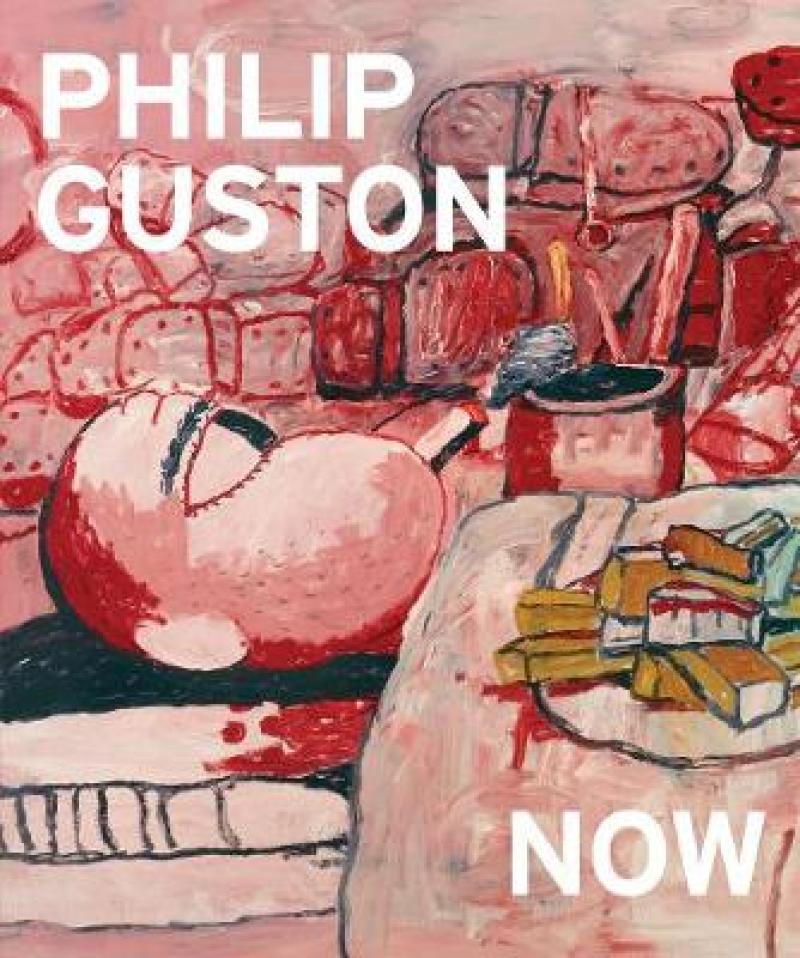Highlights the regenerative quality of the master painter’s work...Whether mapping universal evil or the messy terrain of his own mind, he understood that an examination of society is always, even in small part, an examination of self.
- Rosa Boshier González, Brooklyn Rail
Isn’t that what artists are supposed to be about, showing us the complexity of their encounter with the world, rather than offering platitudes or outrage?
- Lyle Rexer, Brooklyn Rail
Guston became a witness to the 20th century’s darkest and foulest experiences without closing his eyes or turning away, and enabled us to see and reflect upon this brutality.
- John Yau, Hyperallergic
Brings Guston himself to life, thrashingly, ferociously so.
- Holland Cotter, New York Times: Arts
A necessary resource for anyone interested in understanding Guston…. What’s untimely in Guston is his freedom from the urge, so common today, to seek reassurance of one’s own goodness by accusing others of wrongdoing.
- Barry Schwabsky, The Nation
A sweeping retrospective of Philip Guston’s influential work, from Depression-era muralist to abstract expressionist to tragicomic contemporary master. Philip Guston – perhaps more than any other figure in recent memory – has given contemporary artists permission to break the rules and paint what, and how, they want.
Antiques and The Arts Weekly
Philip Guston was a rule-breaking artist, who inspired so many painters as well cartoonists, writers, poets, and musicians, and this book brings together scores of terrific essays by artists and scholars, and a wide-ranging collection of full-color reproductions of his paintings and drawings…. Insightful.
- Jake Marmer, Tablet
[Glenn] Ligon’s text is a powerful exploration of Guston’s Klansmen imagery, full of nuance, clear-eyed about the complexity and difficulty of addressing the subject.
- Ben Luke, Art Newspaper
A career-spanning retrospective that looks at Guston’s legacy and influence, and includes commentary on individual paintings by William Kentridge, Amy Sillman, Tacita Dean and many others.
- Michael Glover, Hyperallergic
Philip Guston is best known for his incisive, cartoonish paintings and drawings ranging in subject matter from everyday scenes to narrative political satires, particularly those of Richard Nixon. Guston’s work received varying degrees of critical praise throughout his lifetime, shifting as he changed course.
- Claire Selvin, ARTnews
A beautifully illustrated catalogue with essays by the show's co-curators and reflections on his influential work by such contemporary artists as Trenton Doyle Hancock, William Kentridge, and Amy Sillman. Guston created work in a variety of styles and from psychological points of view that continue to impact an evolving art world today.
- Paul Laster, Art and Object
Beautifully produced ... Philip Guston Now is a fitting and impressively informative survey and analysis of a remarkable artist, his life and his work.
- Editors, Midwest Book Review
Guston’s enduring appeal rests in the permissions he offers artists. He encourages them to drastically change their work in midstream, to examine their personal relationship to evil, to embrace discredited styles and genres, and to accept and even revel in their own ambivalence about the meaning of art.
- Editors, Art In America
A satisfying compilation of the late painter’s best-known work, as well as some surprises. Assembled for his new traveling retrospective at the National Gallery of Art, this catalogue could function either as an introduction or a point of reentry, giving those with varying experiences with Guston’s work a chance to deepen what they know.
- Editors, Cultured
A rousing and reverential guide to understanding the evolution of a painter and why he deeply resonates with such an illustrious audience of artists and patrons today.
- Evan Pricco, Juxtapoz
